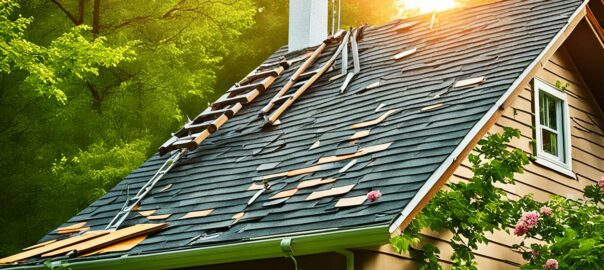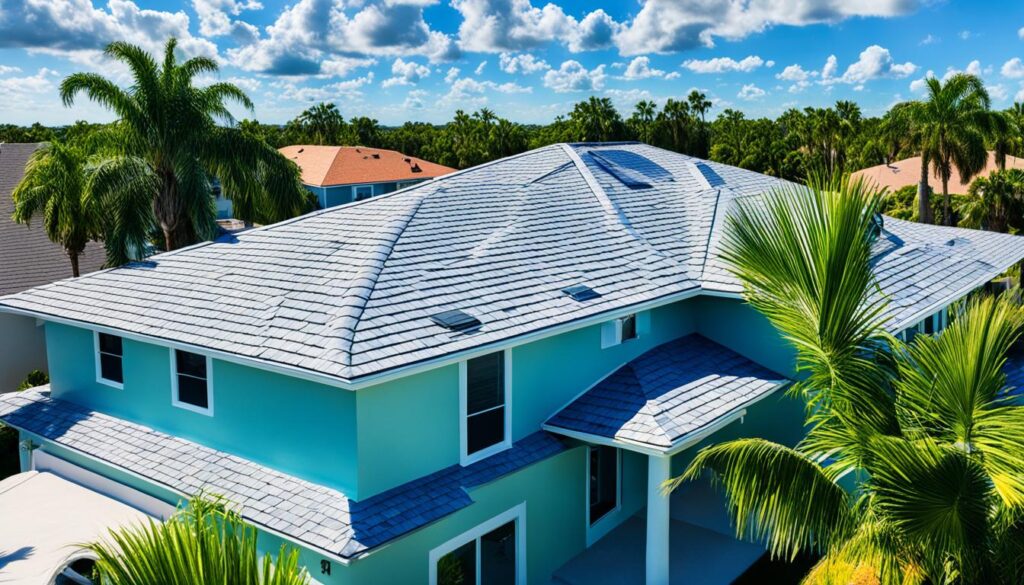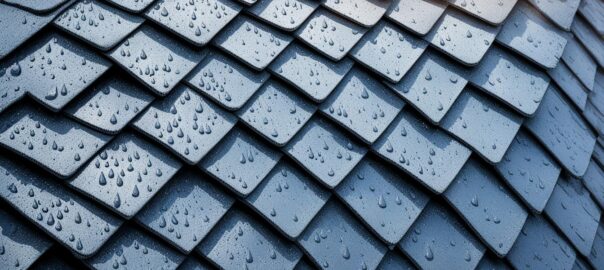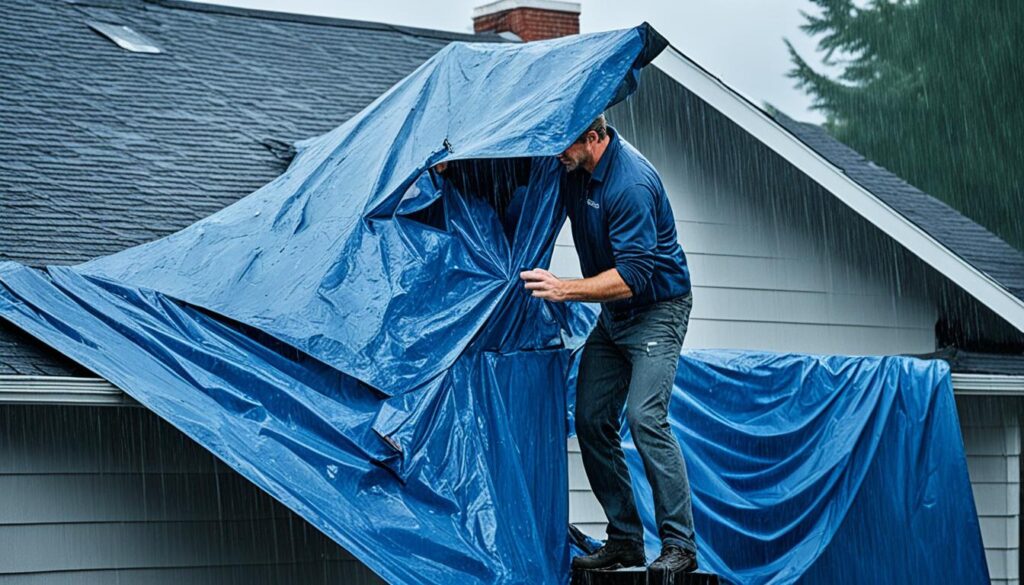When a roof starts leaking, the clock begins ticking on potential mold growth. You might be surprised at how quickly mold can take hold in your home once water finds its way in. The conditions mold thrives in are more common than you might think, and knowing the signs to look out for could save you from a larger issue down the line. So, how long does it really take for mold to become a problem after a roof starts leaking?
Water Seepage Begins
When water seeps through your roof, mold can start growing within 24 to 48 hours. It’s crucial to stay vigilant and act promptly to prevent any further damage. Conducting regular roof inspections is essential to catch any signs of water damage early on. By inspecting your roof routinely, you can identify and address potential leaks before they escalate into a bigger issue.
Water damage from a leaking roof can seep into the structure of your home, causing significant problems if left unchecked. Once water infiltrates your roof, it can lead to dampness in your walls and ceilings, creating the perfect environment for mold to thrive. Mold growth not only affects the structural integrity of your home but also poses health risks to you and your family.
To safeguard your home from the dangers of mold growth due to a leaking roof, be proactive in monitoring your roof’s condition. Remember, a stitch in time saves nine when it comes to roof maintenance.
Initial Moisture Accumulation
To prevent mold growth from a leaking roof, promptly address any initial moisture accumulation to mitigate potential damage and health risks. When moisture seeps into your home due to a roof leak, it creates a breeding ground for mold to flourish. Here are four crucial steps to consider:
- Monitor humidity levels: Keep an eye on the humidity levels in your home, especially in areas affected by the leaking roof. High humidity provides an ideal environment for mold growth.
- Inspect ventilation systems: Ensure that your ventilation systems, such as exhaust fans and air vents, are functioning correctly. Proper ventilation helps to reduce moisture buildup and discourages mold growth.
- Address leaks promptly: Don’t wait to fix the source of the leak. The longer the moisture lingers, the higher the chances of mold taking hold.
- Consider dehumidifiers: In areas prone to high humidity, using dehumidifiers can help regulate moisture levels and prevent mold from thriving.
Ideal Conditions for Mold
Addressing the initial moisture accumulation from a leaking roof sets the stage for understanding the ideal conditions for mold to thrive in your home. Mold thrives in environments with high humidity levels, typically above 60%. To prevent mold growth, it’s crucial to control indoor humidity levels through proper ventilation and the use of dehumidifiers. Implementing mold prevention strategies, such as fixing leaks promptly and ensuring proper ventilation in areas prone to moisture buildup, can help create an environment that’s less conducive to mold growth.
Regular mold testing is also essential to identify any hidden mold growth early on. If mold is detected, it’s recommended to seek professional remediation services. Professional remediation ensures that mold is safely and effectively removed from your home, reducing the risk of health issues associated with mold exposure.
Mold Spore Activation
One crucial factor in mold growth is the activation of mold spores, which can occur rapidly in the presence of moisture and organic materials. When mold spores become activated, they start to germinate and grow, leading to potential mold infestations.
To prevent mold spore activation and subsequent growth, consider the following:
- Implement mold prevention strategies such as controlling indoor humidity levels and promptly fixing any leaks to minimize moisture buildup.
- Regularly inspect and maintain your roof to ensure there are no areas where water can seep through and create a breeding ground for mold.
- Practice moisture control by using dehumidifiers in damp areas of your home and properly ventilating spaces like bathrooms and kitchens.
- Be mindful of spore dispersal when dealing with mold-infested materials, as disturbing them can release spores into the air and potentially spread the contamination to other areas of your home.
Visible Mold Growth Emerges
When mold growth becomes visible, it’s crucial to take immediate action to address the issue before it spreads further. Visible mold indicates that the problem has escalated and requires prompt attention. To prevent mold growth, ensure your roof is properly maintained, fix any leaks promptly, and keep indoor humidity levels below 60%. Implementing mold prevention strategies can significantly reduce the likelihood of mold growth due to a leaking roof.
If you notice visible mold growth, it’s advisable to seek professional remediation techniques to effectively remove the mold and prevent its recurrence. Professionals have the expertise and equipment to safely and thoroughly remediate mold infestations. They can identify the extent of the mold growth, address the underlying cause of the issue, and ensure that the affected area is properly cleaned and sanitized.
Musty Odor Detection
To detect musty odors indicating potential mold growth from a leaking roof, use your sense of smell in areas where moisture is present. Musty odors are often the first sign of mold even before it becomes visible.
Here are some tips to help you detect these odors effectively:
- Sniff around: Take the time to carefully sniff around areas where you suspect water damage or leaks to be present. Mold often thrives in damp environments, and a musty odor may indicate its presence.
- Pay attention: Be attentive to any sudden changes in the indoor air quality. A noticeable shift in the smell of a room can be a warning sign of mold growth.
- Consider allergen testing: If you suspect mold but can’t locate the source, consider allergen testing to identify any potential mold spores circulating in the air.
- Act promptly: If you detect a musty odor, take immediate action to address the issue. Mold can negatively impact indoor air quality and pose health risks, so swift intervention is crucial.
Structural Damage Warning Signs
Detecting musty odors can alert you to potential mold growth from a leaking roof; now, observe for structural damage warning signs that may indicate the severity of the issue. Conduct a thorough roof inspection to identify any visible signs of damage such as water stains on ceilings or walls, peeling paint, or sagging areas. These could point towards leaks that have penetrated the structure.
Additionally, check for any soft or wet spots on the walls or ceilings, as these could indicate water damage from a roof leak.
Leak detection is crucial in determining the extent of the problem. Look for water pooling in the attic, discoloration on the ceiling, or damp insulation. These signs suggest ongoing water infiltration from the roof. Sagging or bowing ceilings are also red flags that point to water damage affecting the structural integrity of the building.
Health Risks Associated With Mold
Mold exposure can pose serious health risks to individuals living in environments with active growth. Here are four ways mold can impact your health:
- Respiratory issues: Mold spores can be inhaled, leading to coughing, wheezing, and throat irritation. Prolonged exposure may even trigger asthma attacks in susceptible individuals.
- Allergy symptoms: Mold can cause or exacerbate allergy symptoms such as sneezing, runny nose, itchy eyes, and skin rashes. Those with existing allergies are particularly vulnerable.
- Sinus infections: Mold exposure can irritate the sinuses, potentially leading to sinus infections. Symptoms may include facial pain, headaches, and nasal congestion.
- Compromised immune system: Prolonged exposure to mold can weaken the immune system, making individuals more susceptible to infections and illnesses.
Taking prompt action to address mold growth and improve indoor air quality is crucial for safeguarding your health and well-being. If you suspect mold in your living space, consider seeking professional help to mitigate potential health risks.
Conclusion
In conclusion, when a roof leaks, mold can start to grow within 24-48 hours in ideal conditions.
It’s important to address the leak promptly and take preventive measures to control moisture and ventilation to prevent mold growth.
Remember, visible mold growth and musty odors are warning signs of potential health risks associated with mold.
Don’t delay in fixing roof leaks to protect your home and health.




